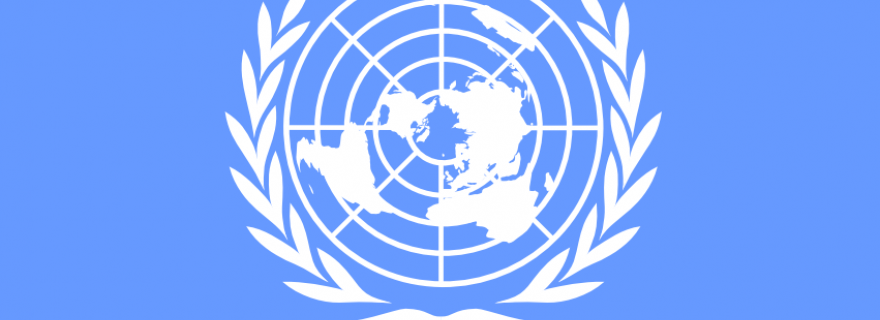Sanctioning conflict-related sexual violence: A struggle for power?
What is the state of the UN Security Council debate on sanctions addressing conflict-related sexual violence?
For centuries, sexual violence has been used in instances of war and conflict, transcending both time and culture. It is used for objectives such as genocide, enslavement, ethnic cleansing, and forced displacement. The widespread occurrence of conflict-related sexual violence warrants urgent attention. The Women, Peace and Security (WPS) agenda acknowledges the impact of armed conflict on women and calls for their active participation in peacebuilding. It is enshrined in United Nations Security Council (UNSC) resolution 1325 (2000) and now consists of nine resolutions. UNSC resolution 1820 (2008) is of particular importance with regards to conflict-related sexual violence. This resolution recognizes sexual violence, for the first time, as a deliberate tactic of war and a threat to international peace and security.
Sanctions
One of the tools that the UNSC can use to combat threats to international peace and security is sanctions. The classification in resolution 1820 of sexual violence as such a threat allows the UNSC to impose sanctions on individuals or entities ordering, engaging, or tolerating in sexual violence as a weapon of war. Although classified as a threat to international peace and security, conflict-related sexual violence is often not recognized by the UNSC as a sanctionable crime. The UNSC’s use of sanctions to address conflict-related sexual violence has been inconsistent despite substantial amounts of evidence for the occurrence of sexual violence and similarities regarding the contexts of a conflict. For instance, the inclusion of sexual violence as a designation criteria of the sanctions regime is often delayed, as was the case in the regimes for Somalia and the Democratic Republic of the Congo.
Arria
In light of these developments, the UNSC convened an Arria meeting – an informal consultation of the UNSC with civil society speakers – on 22nd October, 2018. In this meeting UNSC members were asked, for the first time, to reflect on the current sanctions architecture regarding conflict-related sexual violence. Such a debate should not be solely studied from the perspective of political negotiations. Instead, by studying the language and the explicit and implicit assumptions informing discussion on conflict-related sexual violence, a broader critique emerges. Taken together, such an analysis exposes the political power relations inherent to the discussion about sanctions addressing conflict-related sexual violence.
What stands out when looking closely at UNSC members’ language are the tensions and inconsistencies within statements. In the Arria, it appears that there is an emerging norm to condemn sexual violence as a weapon of war and as a violation of international law that should be acted upon by the UNSC. However, this argumentation flows from a certain narrative of production that says the opposite. Sanctions addressing conflict-related sexual violence are portrayed as a product of the political power and authority of the UNSC as the bearer of international peace and security. At the same time, the UNSC’s authority, as laid down in the UN Charter, is used to call for broader application of sanctions (including human rights violations) as well as a narrow interpretation (limiting the development of the UN sanctions architecture). This is contradictory because despite high-profile public statements and commitment (resolution 1820) to address conflict-related sexual violence by means of sanctions, the UNSC’s response in its sanctions committees remains sporadic and untimely.
Critique
Despite the adoption of the WPS resolutions and the UNSC’s advancement of the WPS framework regarding sexual violence in conflict there are three main points of critique. First, UNSC members generally minimize female agency by emphasizing women as subjects of protection. This disempowerment can be explained by the patriarchal, masculine representation of the international community. These constructions of masculinity limit progress of the WPS framework. Second, UNSC members portray a narrow, selective understanding of conflict-related sexual violence. According to the statements, it seems to occur only in some conflicts (mostly on the African continent), far away in a local context, and only happens to women and girls. Third, these narratives produce, and are at the same time the product of, the political power of the UNSC in seeking to (re)legitimize its authority. The point here is that by choosing certain language, in this case about sanctions, UNSC members silence alternative solutions to conflict-related sexual violence. For instance, the current sanctions architecture is positioned to be more relevant than creating gender-sensitive transitional justice processes, removing barriers for investigation, or facilitating a victim-centred approach. Strikingly, this goes for almost the entire membership of the UNSC, regardless whether it concerns permanent or elected members.
Conclusion
The UN’s ability to sanction conflict-related sexual violence appears as a progressive step to tackle the brutality generated by violent conflicts. But the current discourse on sanctions is also problematic for WPS policy making. The sanctioning of conflict-related sexual violence is a technocratic solution which potentially bolsters the power and authority of the UNSC, but also a solution which does not necessarily do justice to the localized context in which the crimes occur, or to the victims and their potential for agency.
The views expressed above may not necessarily reflect those of any organization with which the author is or has been affiliated.

